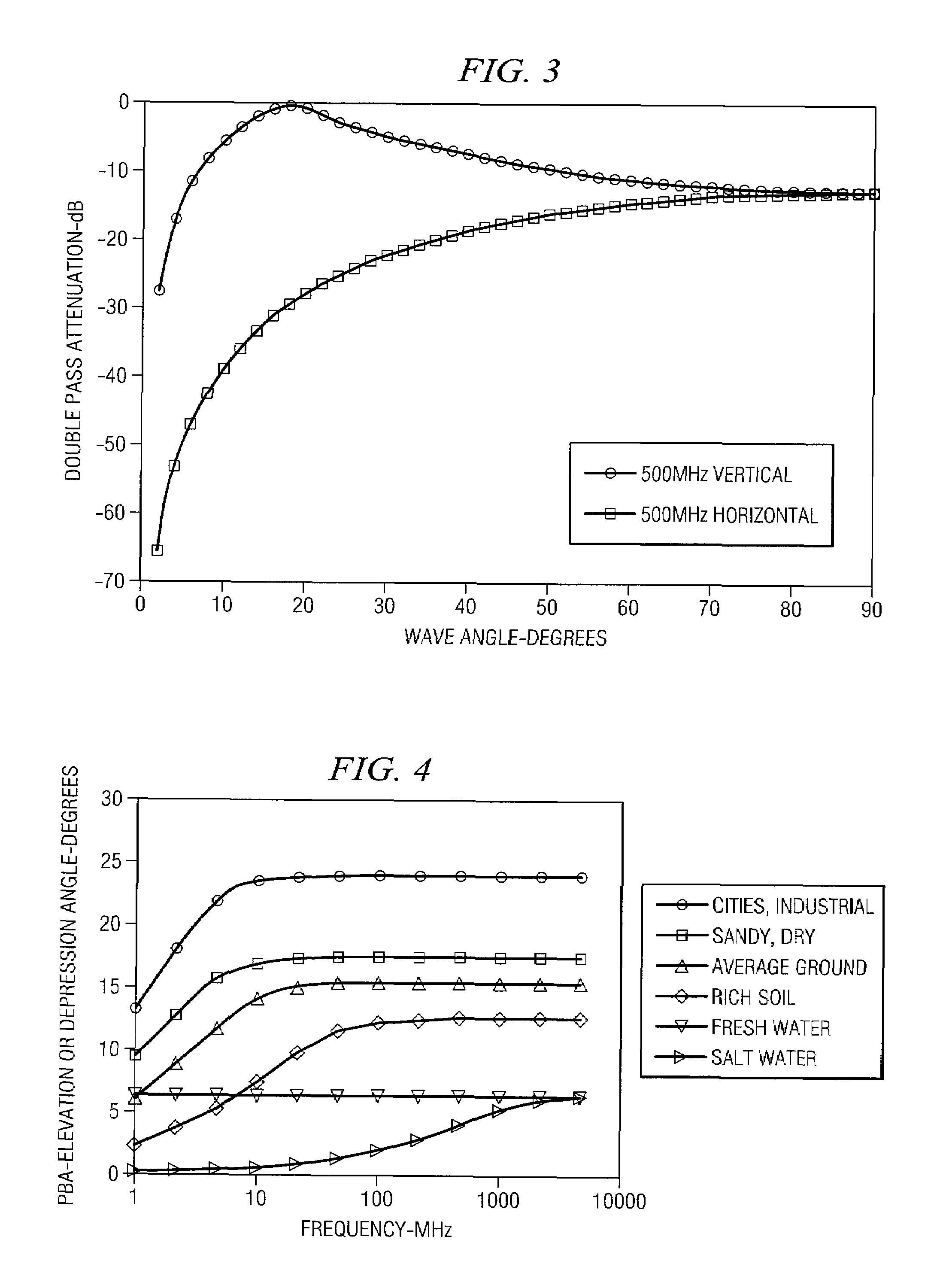Signal processing methods for ground penetrating radar from elevated platforms
a technology of elevated platforms and signals, applied in the direction of electromagnetic wave detection, measurement devices, instruments, etc., can solve the problems of high attenuation rate of higher frequencies, large surface reflection at air-ground interface, and performance of ground-penetrating radars
- Summary
- Abstract
- Description
- Claims
- Application Information
AI Technical Summary
Benefits of technology
Problems solved by technology
Method used
Image
Examples
Embodiment Construction
[0014]The following description is directed to signal processing methods and systems to enhance radar returns and radar imagery from subsurface objects using ground penetrating radar (GPR) from elevated platforms. Applications of the method include detecting and locating buried objects, such as landmines, improvised explosive devices (IED's), unexploded ordnance, weapons caches, subsurface utilities, gravesites, and tunnels. Geological features, or any other subsurface features normally detectable by GPR, may also be detected and located.
[0015]The methods are applicable to both one-dimensional radar inspection, as well as to more advanced signal processing techniques such as Ground Penetrating Synthetic Aperture Radar (GP-SAR) imaging. The methods maximize signal returns and emphasize subsurface radar data, while minimizing or eliminating surface clutter.
[0016]Exploitation of Pseudo-Brewster Angle FIG. 1 illustrates the approximate relationship between the depth of useful ground pen...
PUM
 Login to View More
Login to View More Abstract
Description
Claims
Application Information
 Login to View More
Login to View More - R&D
- Intellectual Property
- Life Sciences
- Materials
- Tech Scout
- Unparalleled Data Quality
- Higher Quality Content
- 60% Fewer Hallucinations
Browse by: Latest US Patents, China's latest patents, Technical Efficacy Thesaurus, Application Domain, Technology Topic, Popular Technical Reports.
© 2025 PatSnap. All rights reserved.Legal|Privacy policy|Modern Slavery Act Transparency Statement|Sitemap|About US| Contact US: help@patsnap.com



